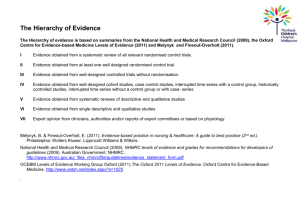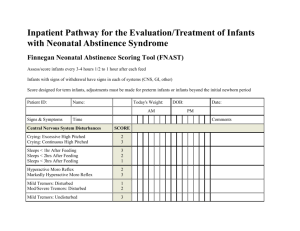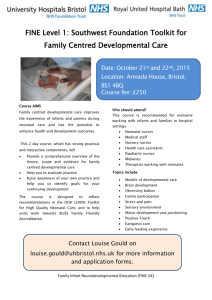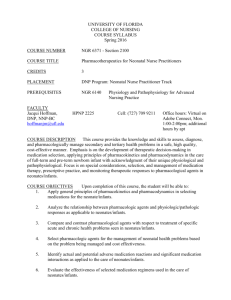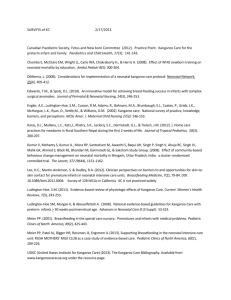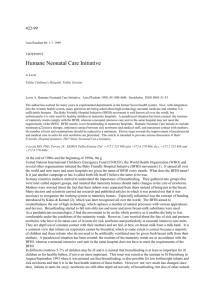7) As a result of today`s presentation, I learned the following that I
advertisement
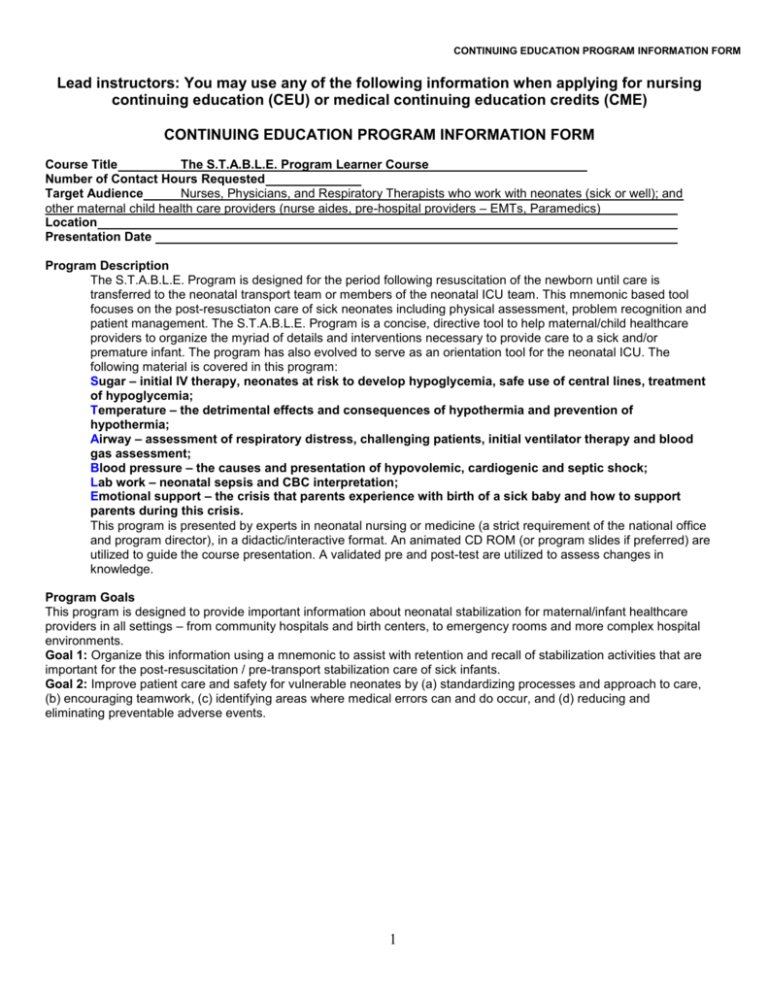
CONTINUING EDUCATION PROGRAM INFORMATION FORM Lead instructors: You may use any of the following information when applying for nursing continuing education (CEU) or medical continuing education credits (CME) CONTINUING EDUCATION PROGRAM INFORMATION FORM Course Title The S.T.A.B.L.E. Program Learner Course Number of Contact Hours Requested Target Audience Nurses, Physicians, and Respiratory Therapists who work with neonates (sick or well); and other maternal child health care providers (nurse aides, pre-hospital providers – EMTs, Paramedics) Location Presentation Date Program Description The S.T.A.B.L.E. Program is designed for the period following resuscitation of the newborn until care is transferred to the neonatal transport team or members of the neonatal ICU team. This mnemonic based tool focuses on the post-resusctiaton care of sick neonates including physical assessment, problem recognition and patient management. The S.T.A.B.L.E. Program is a concise, directive tool to help maternal/child healthcare providers to organize the myriad of details and interventions necessary to provide care to a sick and/or premature infant. The program has also evolved to serve as an orientation tool for the neonatal ICU. The following material is covered in this program: Sugar – initial IV therapy, neonates at risk to develop hypoglycemia, safe use of central lines, treatment of hypoglycemia; Temperature – the detrimental effects and consequences of hypothermia and prevention of hypothermia; Airway – assessment of respiratory distress, challenging patients, initial ventilator therapy and blood gas assessment; Blood pressure – the causes and presentation of hypovolemic, cardiogenic and septic shock; Lab work – neonatal sepsis and CBC interpretation; Emotional support – the crisis that parents experience with birth of a sick baby and how to support parents during this crisis. This program is presented by experts in neonatal nursing or medicine (a strict requirement of the national office and program director), in a didactic/interactive format. An animated CD ROM (or program slides if preferred) are utilized to guide the course presentation. A validated pre and post-test are utilized to assess changes in knowledge. Program Goals This program is designed to provide important information about neonatal stabilization for maternal/infant healthcare providers in all settings – from community hospitals and birth centers, to emergency rooms and more complex hospital environments. Goal 1: Organize this information using a mnemonic to assist with retention and recall of stabilization activities that are important for the post-resuscitation / pre-transport stabilization care of sick infants. Goal 2: Improve patient care and safety for vulnerable neonates by (a) standardizing processes and approach to care, (b) encouraging teamwork, (c) identifying areas where medical errors can and do occur, and (d) reducing and eliminating preventable adverse events. 1 CONTINUING EDUCATION PROGRAM INFORMATION FORM Participant Learning Objectives At the completion of this course, the participant will be able to: SUGAR and SAFE CARE 1. Issues of patient safety and error reduction in the delivery of nursing and medical infant care. 2. Infants at increased risk for becoming hypoglycemic and hyperglycemic. 3. Signs and symptoms of hypoglycemia. 4. The initial, appropriate IV fluid therapy to provide for sick infants. 5. The IV glucose treatment of hypoglycemia and when to re-evaluate the blood glucose following treatment. 6. Candidates for placement of an umbilical catheter. 7. Principles for safe use of umbilical venous and arterial catheters. TEMPERATURE 1. Infants at increased risk for becoming hypothermic. 2. Ways infants lose body heat and protection from cooling. 3. Physiologic responses to hypothermia for premature and term infants. ............ 4. Necessary precautions to observe when rewarming and severely hypothermic infants. AIRWAY 1. How to evaluate the degree of respiratory distress an infant is experiencing. 2. Indications for continuous positive airway pressure (CPAP), positive pressure ventilation (PPV) with bag and mask or endotracheal intubation. 3. How to provide assistance during endotracheal intubation. 4. How to secure an oral endotracheal tube. 5. How to evaluate endotracheal tube location. 6. How to evaluate a blood gas as normal, respiratory, metabolic or mixed acidosis and if compensated. 7. The initial ventilatory support for very low-birth-weight, low-birth-weight and term infants. 8. The signs and symptoms of a pneumothorax, use of transillumination and chest x-ray to evaluate for pneumothoraces and principles of emergent evacuation of a pneumothorax. BLOOD PRESSURE 1. The causes, presentation and initial treatment of hypovolemic, cardiogenic and septic shock. 2. Physical exam for shock and laboratory tests that assist with recognition and evaluation of shock. 3. Indications for and safe administration of dopamine. LAB WORK 1. Risk factors that predispose infants to infection. 2. Clinical signs of infection in infants. 3. Laboratory tests indicated for evaluation of infection including the complete blood count and blood culture. 4. Basic white blood cell development and calculation and interpretation of the absolute neutrophil count and immature to total ratio. 5. The relationship of thrombocytopenia to possible sepsis. EMOTIONAL SUPPORT of the Family 1. The crisis families experience when an infant requires care in a neonatal intensive care unit. 2. Ways healthcare providers can support parents of sick infants. 3. Ways neonatal ICU caregivers can facilitate parenting in the NICU and how to support parents of sick and/or premature infants. 4. Cultural and gender differences in coping and the grief experience. QUALITY IMPROVEMENT MODULE 1. Concerns regarding patient safety and methods to reduce medical errors and preventable adverse events in this vulnerable population. 2. The importance of self-assessment to evaluate care provided in the post-resuscitation/pre-transport stabilization period. 2 CONTINUING EDUCATION PROGRAM INFORMATION FORM PROGRAM SCHEDULE AND CONTENT OUTLINE Outline (topics, breaks, meals, adjournment) 7:00-8:00 8:00-10:00 10:00-10:15 10:15-11:15 11:15-12:00 12:00-12:45 12:45-1:30 1:30-2:30 2:30-2:45 2:45-4:00 4:00-4:30 4:30-5:00 5:00-5:15 Class Time TEACHING TIME (minutes) Registration Collect and grade pre-tests that were taken before the class date Overview of the S.T.A.B.L.E. 120 Program and neonatal stabilization responsibilities Section One: Sugar module Break Section Two: Temperature module 60 Section Three: Airway module 45 Lunch Section Three: Airway (continued) 45 Section Four: Blood pressure module 60 Break Section Five: Lab work module 75 Section Six: Emotional support module 30 Quality Improvement/case study 30 Complete course evaluation and adjourn Note: the post-test is administered at the end of each module TOTAL TEACHING TIME IN MINUTES Bibliography / Reference List Make copy of S.T.A.B.L.E. Learner manual reference list 3 (# of minutes) CUM. TIME (minutes) 120 180 225 270 330 405 435 465 465 MINUTES CONTINUING EDUCATION PROGRAM INFORMATION FORM The S.T.A.B.L.E. Program Learner Course – Speaker Evaluation Instructor Name(s): Date: Course Location: We take yoru feedback very seriously. Please offer specific details to help us improve! STRONGLY DISAGREE DISAGREE I DON’T DISAGREE OR AGREE 1 2 3 1) Objectives – Stated learning objectives met 2) Audiovisuals – contributed to presentation 3) Content – Relevant to my practice 4) Presentation – Speaker qualified and held interest 5) Effectiveness – Speaker was organized & effective 6) Practice – Validated/Changed my practice 7) As a result of today’s presentation, I learned the following that I previously did not know: a) b) c) 8) I recommend the instructor do the following to improve their presentation: 4 STRONGLY AGREE 4 STRONGLY AGREE 5
